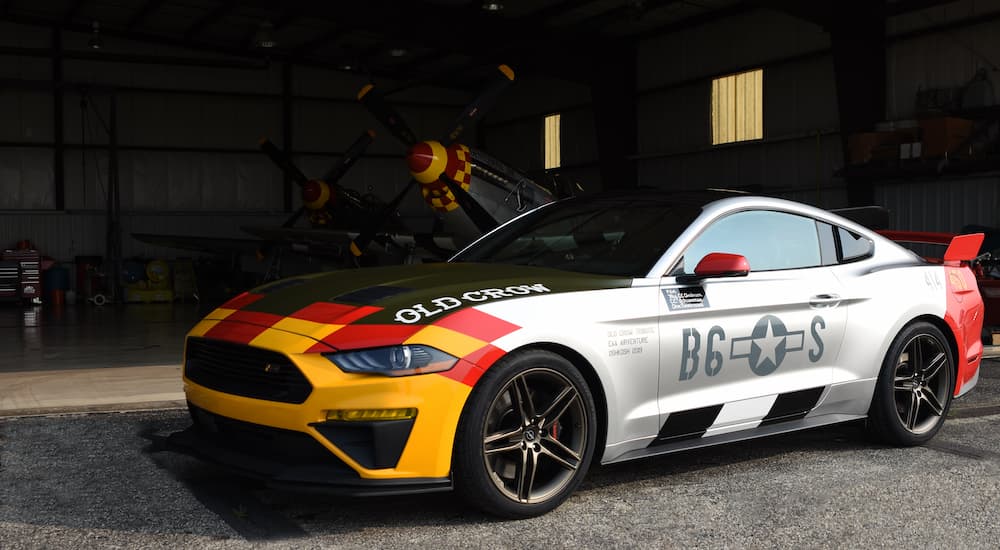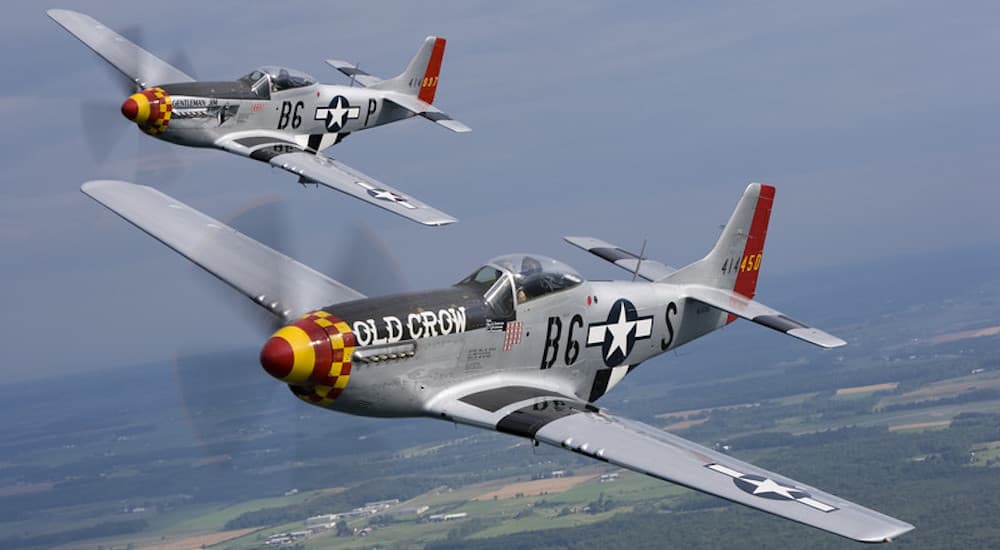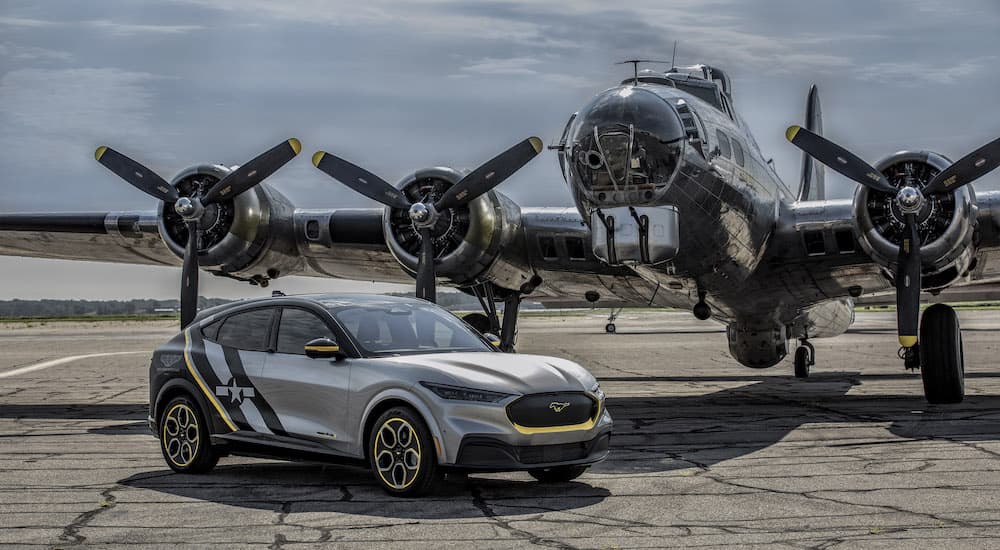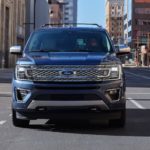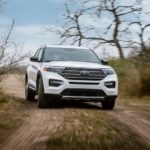It’s fairly easy to find a used Ford for sale, but do you know what the Ford brand encompasses? Of course, it’s easy to list the many innovative features that the lineup offers, especially in best-selling workhorses like the F-150, legends like the Bronco, and speed demons like the Mustang. However, there’s another side to the American automaker that will make your Ford fandom even more rewarding. So, what are the little-known secrets of Ford?
Henry Ford put the world on wheels in the early 1900s and spent the rest of his life endlessly working to improve his design—and make a lasting impact across the globe. The Model T physically embodied his vision, while his systematic approach to lowering costs via innovations like the assembly line vastly impacted industries worldwide. On American soil, Ford’s impact took a different turn as he focused his attention on the American military—an act that gives new meaning to the Blue Oval today, and what it means to be Built Ford Tough.
The Ford Motor Company and World War I
The Ford Motor Company was actively building its momentum in the American automotive landscape when the United States entered World War I in early 1917. Although Henry Ford was an outspoken advocate for peace, Ford didn’t think twice and immediately tasked his Rouge plant with aiding the war efforts. Ironically, the Model T wasn’t the first model off the plant’s production line. Instead, that honor went to the Eagle boat, a submarine chaser built for the Navy.
As with everything he set out to do, Ford was determined to build the submarine better than ever. He accomplished this by applying the same principles from his production line. What was the result? He set a new record when he built the boat in just ten days.
When the war ended in 1918, many businesses returned to normal production and veterans returned home, disabled and war-torn. However, Ford once again set a new standard in America when he adopted a “philosophy of inclusion.” Rather than turning veterans away at the doors of his company—a sad trend of the time—Ford hired disabled veterans and adapted the work environment to their needs. In doing so, he set veterans up for success and gave them greater hope—as they rebuilt their lives on the soil they risked their lives defending.
The Ford Motor Company and World War II
President Franklin D. Roosevelt was known for his fireside chats, a radio program that allowed him to address Americans across the nation live. On December 29, 1940, that chat took a different tone as Roosevelt addressed national security—and the US’ increasing role in World War II. During the chat, he announced and outlined his plans to “harness the efficient machinery of America’s manufacturers” to build 50,000 combat aircraft, ships, guns, shells, and other military necessities.
“We must be the great arsenal of democracy,” Roosevelt told Americans. “For us, this is an emergency as serious as war itself. We must apply ourselves to our task with the same resolutions, the same sense of urgency, the same spirit of patriotism and sacrifice, as we would show were we at war.” Roosevelt goes on to stress, “As President of the United States, I call for that national effort. I call for it in the name of this Nation that we love and honor, and which we are privileged and proud to serve. I call upon our people with absolute confidence that our common cause will greatly succeed.”
Building the Toughest Fords in History
With automobile production halted, the Ford Motor Company proudly repurposed its assembly plants to aid the war efforts. The models that once rolled off Ford’s assembly lines were a distant memory—as assembly workers built tanks, jeeps, and planes in record time. While impressive, this was nothing compared to Ford’s Willow Run plant, which produced the toughest Fords yet.
After President Roosevelt’s address, the United States War Department tasked the Ford Motor Company with mass-producing B-24 Liberator airplanes. The assignment was significant and surprising, leaving many aviation experts baffled—likening the job to expecting a blacksmith to design a perfect wristwatch without any training or expertise. The criticism wasn’t unexpected, considering the breadth of the project. Ford models weighed around 3,000 pounds and had approximately 15,000 parts on average, while the B-24 measured 67 feet long, weighed 18 tons, had 360,000 rivets, and had 450,000 parts.
Fueled by criticism, Ford set out to prove every naysayer wrong—which started with Charles “Cast Iron Charlie” Sorenson, the company’s production chief. Sorenson toured a San Diego plant tasked with building aircraft and was unimpressed by what he saw. Following the tour, he spent the entire night in his hotel room sketching out a more efficient process, which mirrored Henry Ford’s early model—but on a larger scale. He immediately came to one conclusion: Ford needed a bigger manufacturing facility.
Ford’s answer was to build a 3.5-million-square-foot production facility known as Willow Run in Ypsilanti, Michigan. Sorenson’s sketches came to life with a mile-long production line, which marked the first time an assembly line was used to build aircraft. However, another problem surfaced when Ford engineers learned that engineering drawings for the B-24 were entirely useless, leaving Ford in the dark before production even began. Nevertheless, Sorenson and the Ford Motor Company team refused to give up.
Sorenson flew two Liberators to Michigan, where each aircraft was dismantled piece-by-piece over the next year. The team, which included over 1,000 members, worked 24 hours a day creating new schematics of the plane and every individual component. Once done, the blueprints measured a whopping five million square feet; yet, it gave Ford engineers the guide they needed to finally start production. Fortunately, Ford’s diligence paid off, as the Willow Run factory built one B-24 Liberator every 63 minutes, embodying Roosevelt’s vision to construct an arsenal of democracy on American soil.
While the Willow Run plant churned out B-24 bombers every hour, Ford’s other manufacturing plants stayed just as busy. For example, the River Rouge plant produced M-4 engines, armor plates, and M-4 tanks. By the end of the war, Ford’s efforts were undeniable; the company reported a total of 277,896 tanks, armored cars, and jeeps rolling off its production line. In addition, the company built 86,865 aircraft, 57,851 aircraft engines, and 4,291 military gliders.
What It Means Today
What does Ford’s military support in World War I and World War II have to do with your local used Ford lot? It shows the character of the Ford Motor Company, and its dedication to Americans like you. Henry Ford’s vision was to put the world on wheels; in doing so, he introduced us to a world beyond the trusty steed. However, that vision took a backseat to the needs of Americans during World War I, when Ford halted production of the Model T to begin its commitment to the US military. More importantly, Ford didn’t forget about those who served the country, hiring veterans after the war when no one else would.
Henry Ford’s patriotism didn’t end when he left the company’s helm; instead, it flourished as his family took the reins. This passion for American citizens is central to Ford’s past, present, and future, and can be seen today in its value promise. Their affordable yet solid-quality vehicles still work their hardest for Americans from sea to shining sea.
